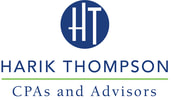|
The SECURE Act 2.0 has a new provision that speaks to the nature of auto-enrollment for new 401(k) plans. All eligible hires will be required to enroll at a pretax rate of 3% at the minimum. Furthermore, the mandatory enrollment will come with an auto-escalation of 1% annually, but this is only effective until the salary reduction reaches 10% at a minimum and 15% at most. The goal is to incentivize the people who participate in retirement savings accounts. The SECURE Act 2.0 is part of the Consolidated Appropriations Act of 2023, but the majority of the provisions won’t be put into effect until 2024 or 2025, if not later, so there is still a lot of time to work out the concepts of these provisions and then implement them.
As part of the mandatory auto-enrollment aspect of new retirement savings plans, employers are permitted to provide employees with the option to choose which contribution level they want to opt in to, but they must let them know that the default contribution level is 3% pretax, which they will be enrolled in if they do not specify otherwise. These details are effective for new retirement savings plans that are established after Dec. 31, 2024. What else is happening with the new provisions? To start, catch-up contributions will be enhanced. As of now, the current mandates permit employees over the age of 50 to make catch-up contributions with the goal of increasing the size of their retirement savings plans as they inch closer to the age of retirement. Currently, there is a catch-up contribution limit of $7,500 per person for those between the ages of 50 and 59. However, with the new catch-up contributions in mind, people ages 60 to 63 can make catch-up contributions of either $10,000 or 150% of the regular catch-up contribution value for 2024. The higher catch-up contribution value will be applicable to people who either already are 60, 61, 62 or 63 or will turn one of these ages within the applicable tax year. Required Roth catch-up contributions for high-income earners — those who are making more than $145,000 per year — have to be contributed on a Roth basis, meaning post-tax. This detail is required for all plans that offer the option to make catch-up contributions. Also, this detail will go into effect for tax years that follow Dec. 31. When it comes to emergency savings accounts, or ESAs, there will be many changes as well. For starters, access to ESA funds will be permitted under certain circumstances beginning in 2024. Access will be granted to participants who wish to make an emergency savings withdrawal of no more than $1,000 per year without having to pay any early withdrawal penalties or fees. The emergency withdrawal amount will need to be repaid within three years of the withdrawal date. The emergency withdrawals can be made at any point in time on a post-tax basis. While matching contributions from the employer to the employee may be available depending on the employer, the matching contributions will be placed in the employee's 401(k) account, not their ESA. Auto-enrollment in ESAs is a possibility, though employees will be auto-enrolled at a rate of 3% with contributions being limited to no more than $2,500. And the only employees who are eligible for ESAs are those who are not considered to be compensated highly. These employees are allowed to withdraw four times without incurring any fees, though only one withdrawal per month is allowed. The dollar amount of the employee's regular contributions and the balance at the time of requesting a withdrawal do not affect the employee's ability to make an emergency withdrawal. Employees can cash out the money in their ESAs or combine the funds with Roth 401(k) accounts and IRAs. The infrastructure needed to implement this provision is expected to be very complicated, and while it has been said that the provision will be effective as of 2024, this deadline is also thought to be a bit too optimistic, so stay tuned. While these provisions won't be effective immediately, they are complex, so it's important to familiarize yourself with them ahead of time. But these provisions are not the only ones to get acquainted with! There are plenty more, including one provision, the Saver's Match, that will go into effect sometime in 2027 and is intended for lower-income individuals. The Saver's Match provision will replace the Saver's Credit, which is the current standard for lower-income individuals who contribute to retirement savings accounts. Those who contribute are eligible for a government-funded match to their contributions to an IRA or employer-sponsored retirement plan, with the value of the match being 50% and up to $2,000 per person. These matching contributions are considered to be income increases, ranging between $41,000 and $71,000 for those who file jointly. But this is only the very beginning! Consult qualified legal and financial experts to see how these rules will affect you. Comments are closed.
|
Newsletter articles are posted every 2 weeks. If you would like to have our e-newsletter delivered directly to your inbox, please sign up. Your information is confidential; you can unsubscribe at any time. Subscribe. Categories
All
|
Proudly powered by Weebly

 RSS Feed
RSS Feed